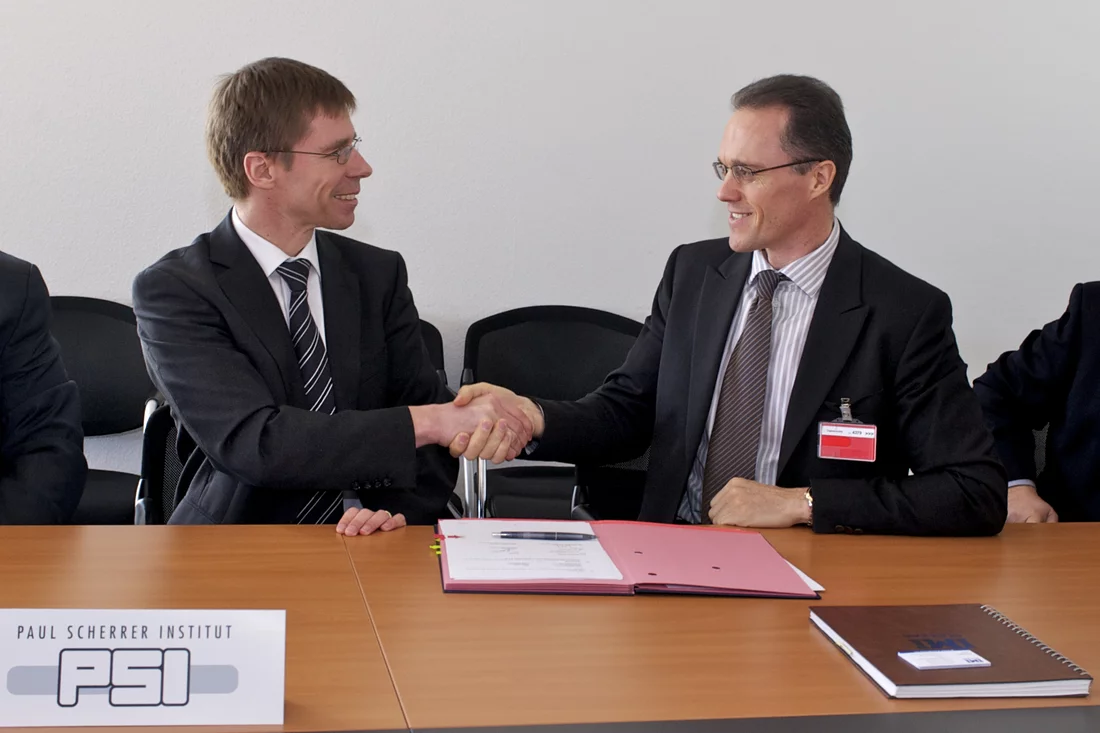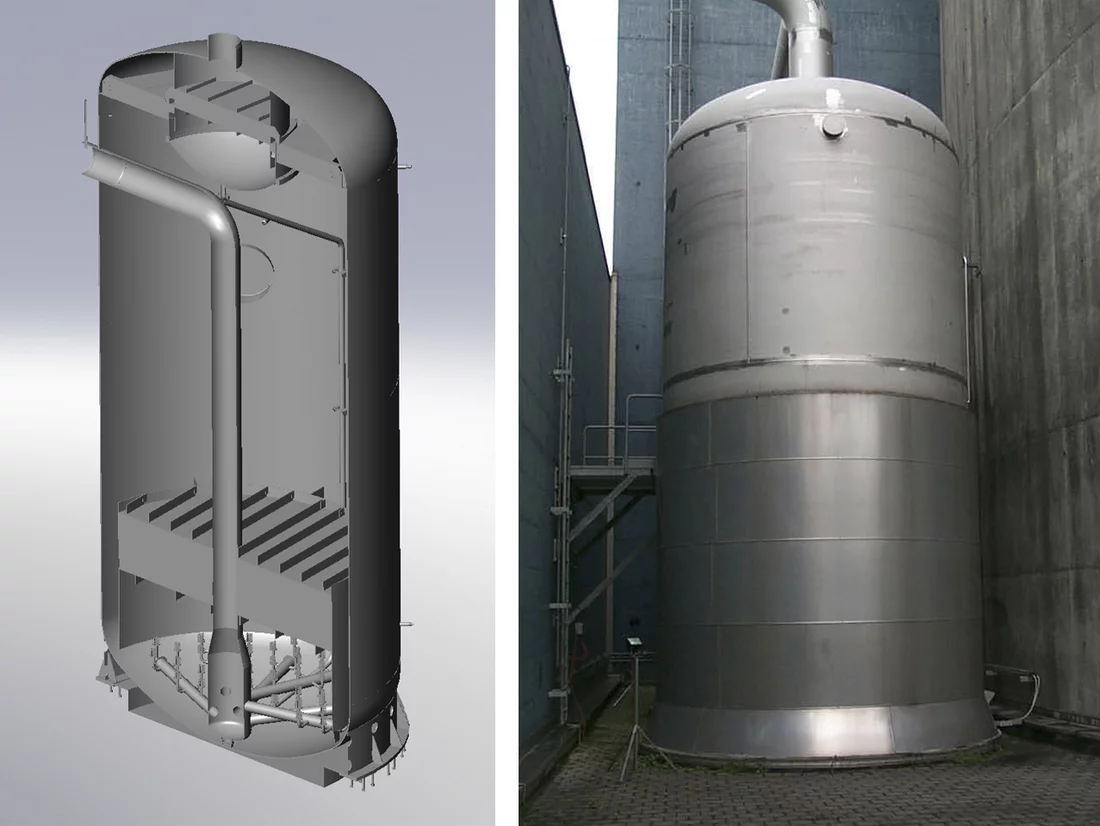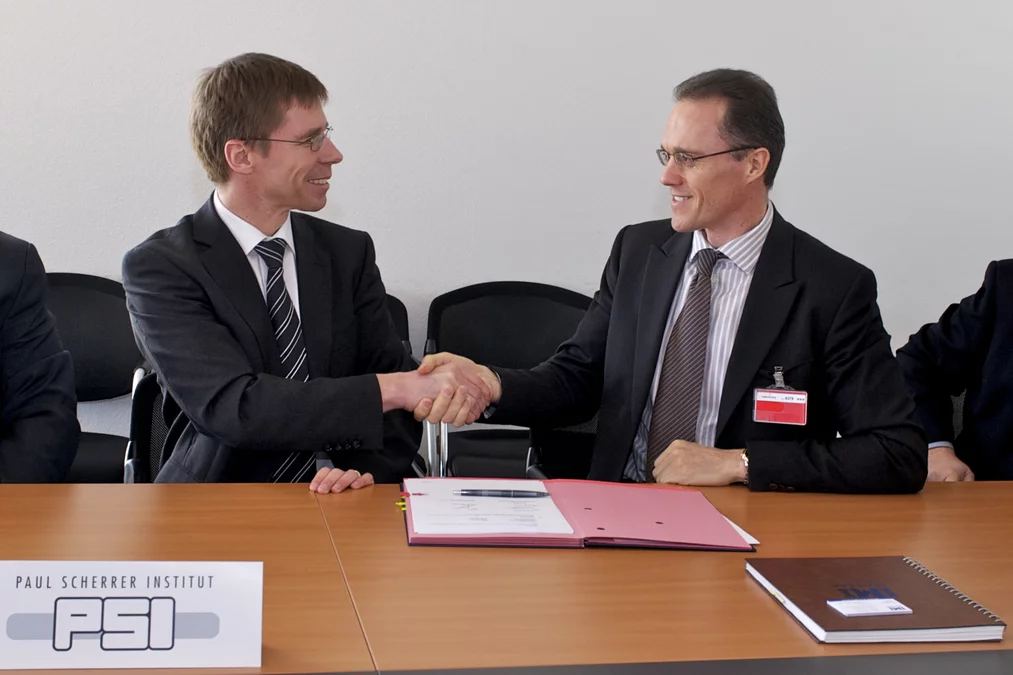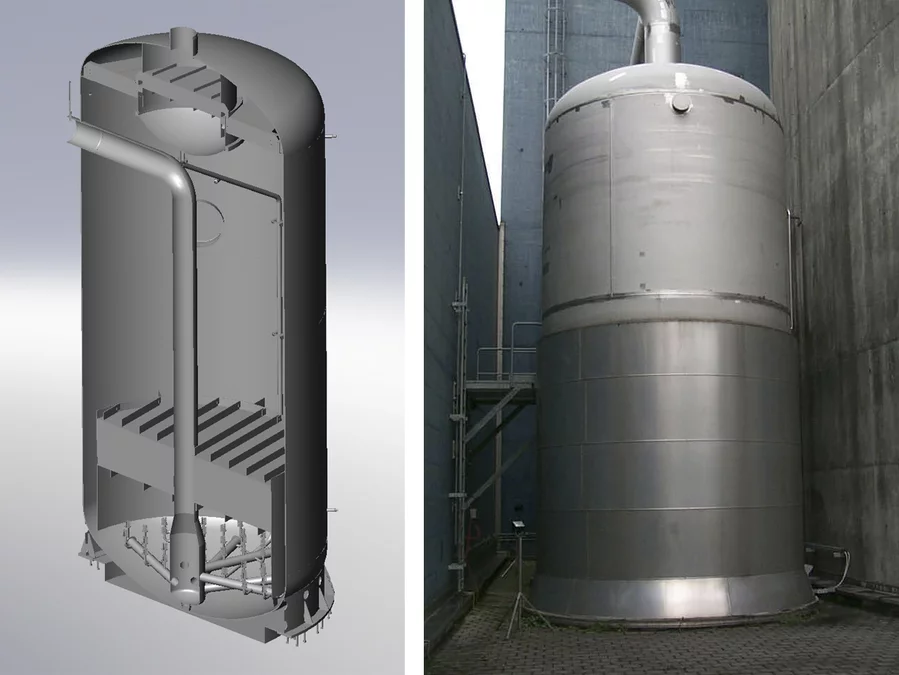The Paul Scherrer Institute and industrial company CCI AG have signed a licencing agreement for iodine filtration processes
In the nuclear disaster at Fukushima in Japan last year, the radioactive compounds that escaped from the plant caused both human and environmental damage. Modern filtration systems can considerably reduce the leakage of radioactive materials after serious nuclear accidents. Researchers at the Paul Scherrer Institute (PSI) in Villigen have developed an efficient technique for filtering radioactive iodine. The technique removes virtually all of the radioactive iodine from contaminated exhaust air before it is released into the environment from a damaged power plant. PSI has now found a contractor who can supply the technique for use in nuclear power plants around the world.
Nuclear power plants are designed so that in the event of a reactor core meltdown, any radioactive materials released are kept inside the containment building, (a protective structure made of reinforced concrete) and are not released into the environment. However in an accident the pressure within this building may become so large that at some point the radioactively contaminated steam-gas mixture must be released – or vented - into the environment. During this process – referred to as venting in technical jargon –to minimise the exposure of humans and the environment to radioactivity, a number of nuclear power plant operators have for some time fitted filtration systems that purify contaminated exhaust air before release into the environment. Swiss nuclear power plants have incorporated such venting filters since about 20 years, when state of the art systems could retain around 95% of the radioactive iodine. However recent research has shown that several different forms of iodine are produced, and that these are not adequately or permanently filtered out using these earlier systems. Iodine is very volatile, and its chemical form is crucial for its retention. Although the half-lives of the most common forms of radioactive iodine released during nuclear accidents are relatively short at around eight days, these compounds could be carried far away, and are therefore particularly dangerous for humans. Radioactive iodine deposited in the thyroid gland via inhaled air or food can cause thyroid cancer. This danger has normally been countered by providing iodine tablets to the population near nuclear power plants. In the event of an accident these tablets are taken to saturate people’s uptake of iodine and block the thyroid’s absorption of further, radioactive iodine.
Complete and long-term filtration
PSI researchers led by Salih Guentay have developed a process that filters the radioactive isotope iodine-131 from exhaust air virtually completely. Filtering techniques have existed in the past, but they were not effective for all forms of iodine, and were not capable of long term binding of iodine. The new PSI method overcomes both these deficiencies. "The new process allows the elimination of all forms of iodine - elemental or organically-bound - and both are retained long-term, because it prevents re-evaporation,” said PSI Assistant Director Martin Jermann. Another advantage of the new filtration system: not only gaseous iodine, but also aerosols – tiny dust particles – that are contaminated with iodine - are better retained than by conventional filters. The new pressure relief filter can deal with the extraordinary conditions encountered during venting - high temperatures, high pressures, and the presence of many fission products. The filtration system is constructed so that despite a high retention factor, no blockages can arise that could affect the release of pressure.
Conversion into water-soluble iodine
Iodine is released into the air in a volatile form such as elemental iodine (I2) or as a part of an organic compound (like, for example, methyl iodide CH3I). To filter volatile iodine from exhaust air effectively it must be converted into water-soluble iodine. With elemental iodine this is achieved by chemical reaction with thiosulfate (S2O32-). In the case of organic compounds the transformation requires a catalyst. The catalyst used in the PSI method is a long-chain quaternary amine. Only after the volatile iodine has been converted into water-soluble iodine can it be reliably removed from the exhaust air.
If a nuclear meltdown accident requires venting pressure, the iodine-containing mixture of steam and gas will be passed through the filter system. The iodine will be bound within this system, and can be disposed of properly along with the filter. The steam-gas mixture cleaned of aerosols and iodine can then be discharged into the environment.
Increasing demand after Fukushima
The patented method developed by PSI is now available for use in nuclear power plants all over the world. The CCI AG in Balterswil (TG) uses the PSI process in a Sulzer technology-based filtration system. PSI began the search for an industrial partner to commercialise their patent long before Fukushima, but "The market for pressure release filtration systems has soared since Fukushima. The iodine filter developed by PSI gives us a competitive technological advantage," said Denis Grob, Manager of Nuclear Services at CCI. Industry experts estimate the potential market for this new filtration system is over one billion Swiss francs. There are approximately 430 nuclear plants in operation worldwide. Many of them have inadequate filtration systems or have none in use at all. "We have to convince NPP operators that they must use the best possible technology," said Grob. Since the nuclear accident at Fukushima, the regulatory authorities in many countries have started tightening up their requirements for filtration systems. PSI participates in the commercial revenues from the sale of the filtration systems they have developed via licensing fees. "With this new process, PSI can apply its long-term experience with iodine and aerosol research towards the safety of nuclear power stations,” said PSI Deputy Director Jermann.
ABOUT PSI
The Paul Scherrer Institute develops, builds and operates large, complex research facilities, and makes them available to the national and international research community. The Institute's own key research priorities are in the investigation of matter and material, energy and the environment; and human health. PSI is Switzerland's largest research institution, with 1500 members of staff and an annual budget of approximately 300 million CHF.
ABOUT CCI
CCI AG in Balterswil (TG) employs around 200 staff, and develops and produces steam valves for power plants, amongst other things. The company is a subsidiary of the international engeneering group IMI, and is based in Birmingham (GB).
Contact
Martin Jermann, Deputy Director PSITelephone: +41 56 310 27 18, E-mail: martin.jermann@psi.ch
Denis Grob, Head of Nuclear Services CCI AG
Telephone: +41 79 249 86 00, E-mail: dgrob@iminuclear.com




